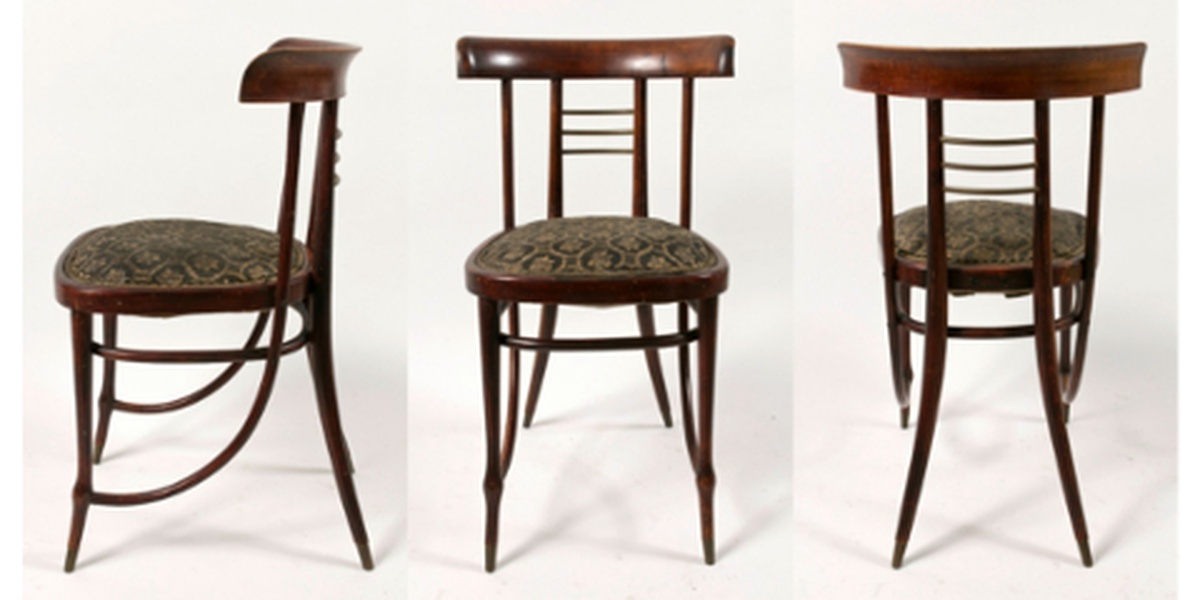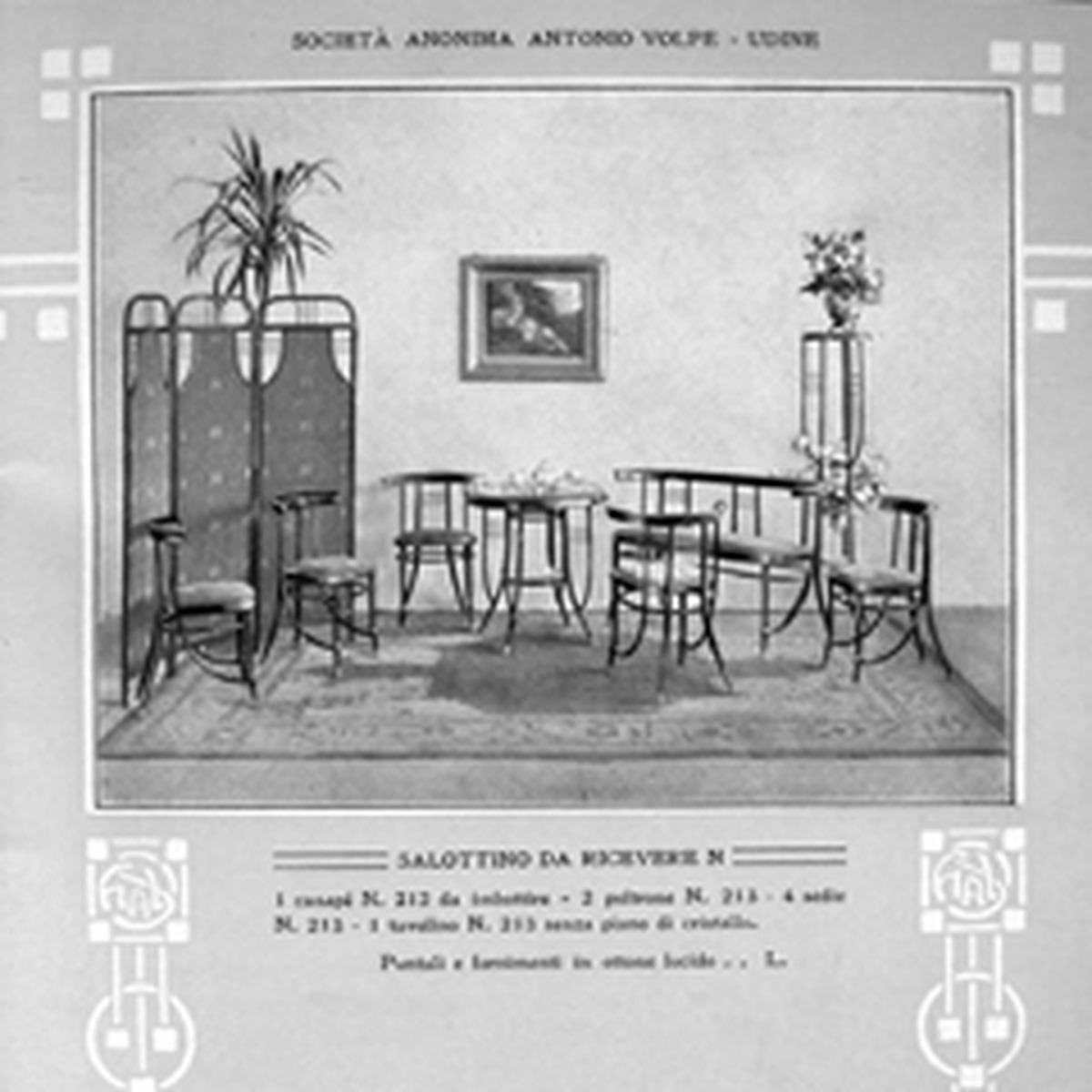Seguici
Museo del Design del Friuli Venezia Giulia – Associazione di Promozione Sociale
P. IVA e CF 02863400301 – info@mudefri.it
Further in detail, some points backing the claims of the design of the rocking chair n. 267 to Max Fabiani and its production to the Società Antonio Volpe.

THE AUSTRIAN CONTEXT
The narrative regarding furnishing made with curved wood has been completely written by Austrians and by the Viennese school. The Società Anonima Antonio Volpe had various connections with the Austro-Hungarian world. For example, the company’s assets for the firm construction in 1882 came from Hungary and the wood used for the production came from Austria. These connections, as well as the intertwined commercial relations and design planning were definitely strong and proactive.

Some of the designs on the catalogue of 1921 have certainly a good amount of Austrian influence. However, the first original design with a resembling Viennese quality had been produced long before the First World War. The only chair that could be compared with this design was a product by the Viennese firm Portoix & Fix: it had been designed in 1904 by Max Fabiani, at the time architect of the firm.
The wooden parlor n. 212-213 illustrated on the Società Anonima Volpe’s catalogue (1910) it is not comparable to any of the models presented by Thonet or J & J Kohn.